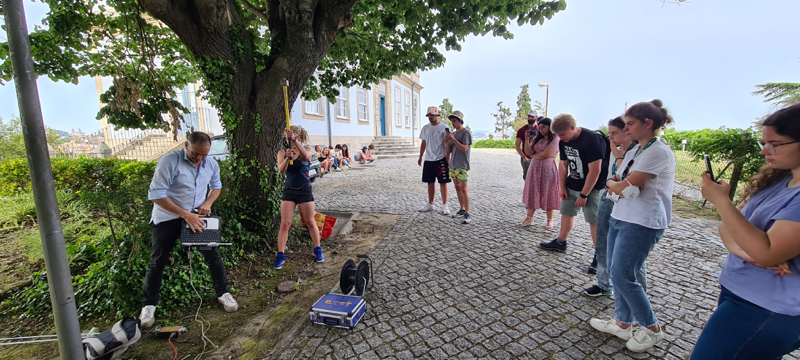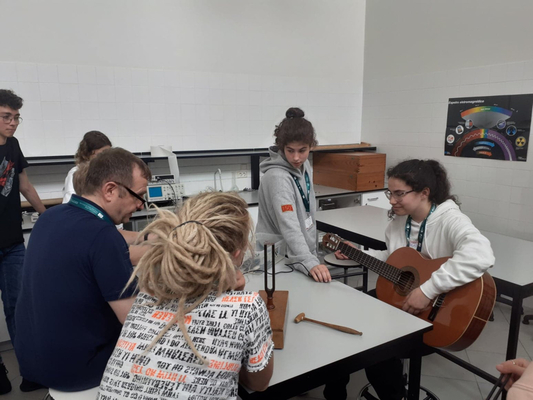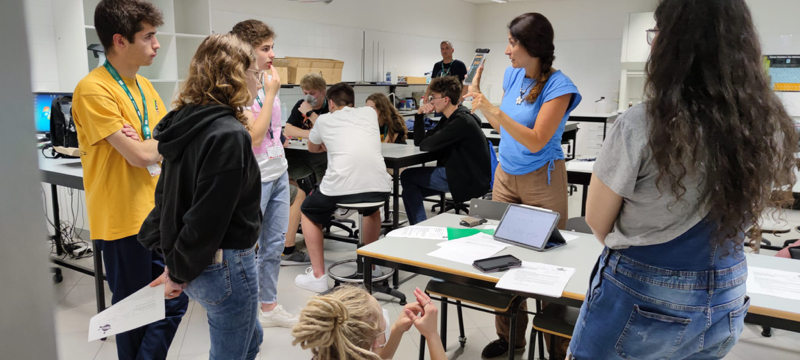
From 16 to 21 May 2022, students and teachers participated in the Erasmus + Eupantec2019 "Physics and New Technologies" project meeting at the "Rocha Peixoto" school in Povoa de Varzim, Portugal. The main purpose of the meeting was to work on experiments related to waves, using new technologies, Raspberry Pi Pico and ESP32 microcontrollers, sensors, mobile applications and Vernier and Pasco laboratory equipment. It just so happens that the Portuguese partner school in Povoa de Varzim is located just a few hundred meters from the Atlantic shore, however, the subject of the meeting includes not only sea waves, but also seismic waves, radio waves and sound waves. Each country has prepared interesting experiments. A very interesting event was the workshop in the laboratories of the Faculty of Civil Engineering of the University of Porto. For example, a scientist at the university, Dr. Eduardo Costa conducted experiments for the participants in the acoustics laboratory, which were used to study the reverberation time and disturbance of sound waves. In this laboratory, among other things, work on soundproofing materials and testing solutions for construction, which significantly reduce noise, are carried out.

The project participants were very impressed by the huge laboratory, which housed the ocean simulator, where research on coastal protection is carried out, but also technologies for obtaining energy from sea waves are being developed. The presentation of the conducted experiments on sea waves was conducted by Dr. Francisco Taveira Pinto. On the last day of the project meeting, the students were guests of scientists from the Department of Geophysics at the University of Porto, and more precisely, they took part in workshops at the seismic station and weather station. The students gained thorough knowledge in the field of seismic waves directly from the director of the institute, Dr. Helena Sant'Ovaia, who explained the operation of seismic sensors and the method of recording the results transmitted from the sensors. Under the supervision of the geophysicist and astronaut Dr. Rui Moura, the students measured the speed of the seismic waves they caused with a giant hammer. Interestingly, these waves were measured not only by the seismic sensors used during the experiment, but also recorded by a nearby seismic station. An interesting lecture on the future of physics was given to the project participants by Dr. Manuel Marques from the Department of Physics and Astronomy. Erasmus + mobility activities have been completed at the Institute of Geophysics. Students, teachers and scientists from the Institute of Geophysics at the University of Porto met for an outdoor dinner at the seismic station. The beautiful panorama of Porto from the highest point in the city was conducive to talks, a good mood and summing up the activities in the project. In addition to the extensive scientific program of the five-day meeting, there was some time to get to know Povoa de Varzim. The students had a meeting with the mayor of Povoa de Varzim in the town hall, visited the historical museum of the city of Povoa de Varzim, visited Porto and even had a surfing lesson on the Atlantic beach in Vila do Conde.
